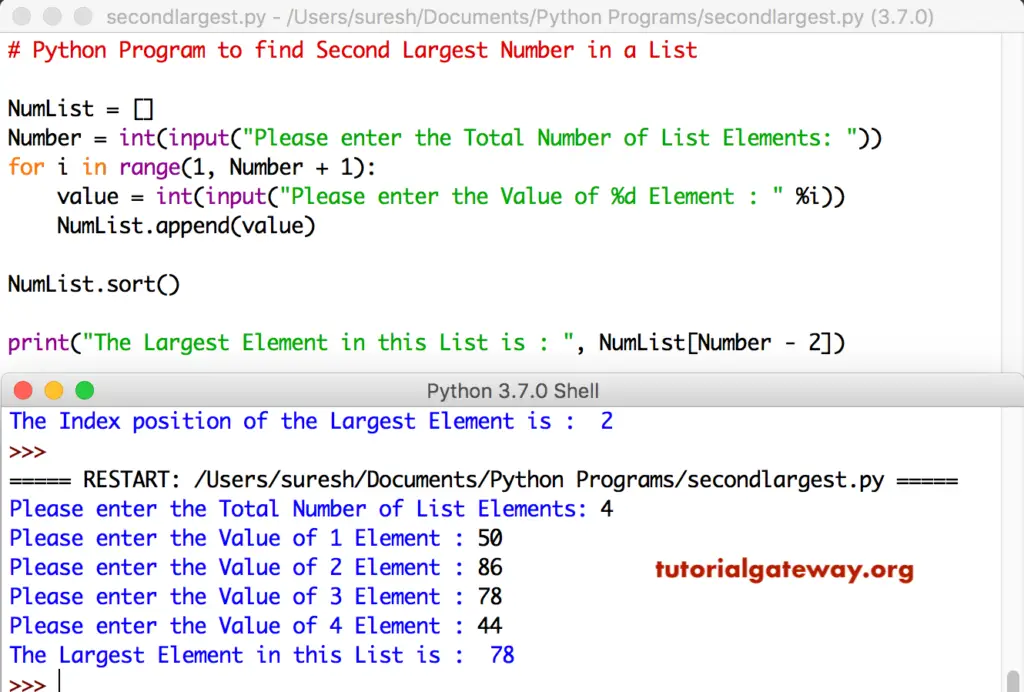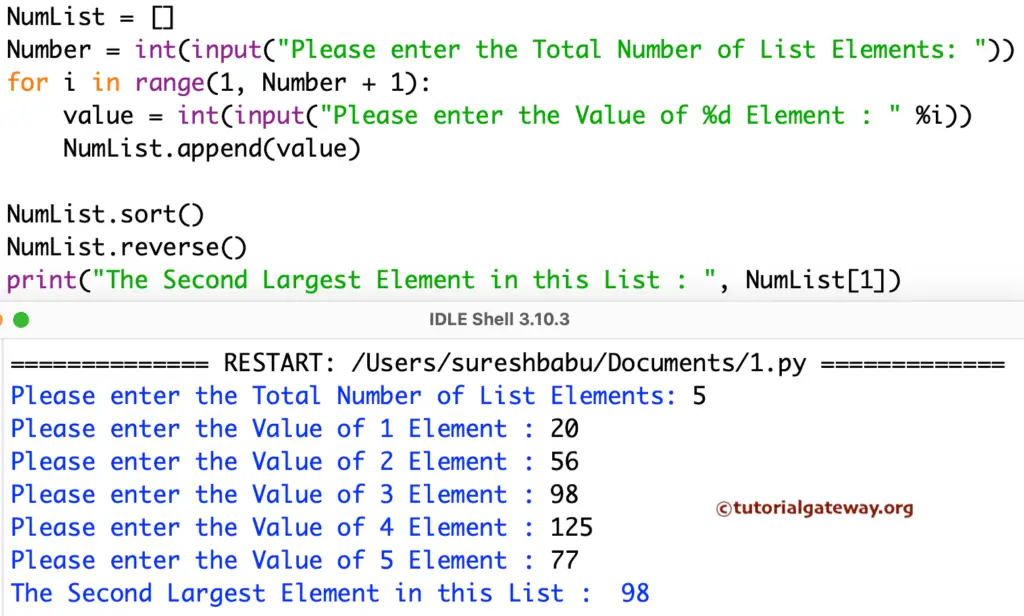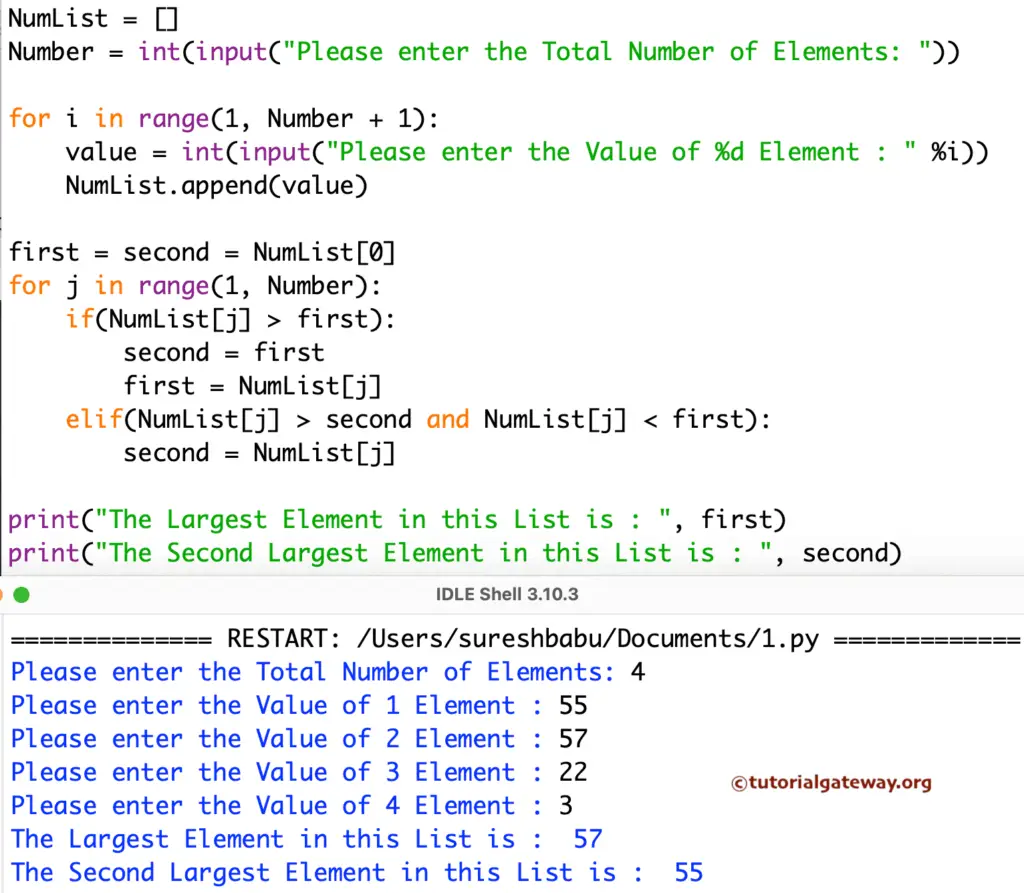Write a Python Program to find the Second Largest Number in a List of items using the sort() function, reverse() function, and for loop with a practical example.
Python Program to find the Second Largest Number in a List using sort
This Python program allows users to enter the length. Next, we used For Loop to add numbers to the list. The sort function sorts the List elements in ascending order. Next, we use the Index position to print the Last but one element in a List.
NumList = []
Number = int(input("Please enter the Total Number of List Elements: "))
for i in range(1, Number + 1):
value = int(input("Please enter the Value of %d Element : " %i))
NumList.append(value)
NumList.sort()
print("The Largest Element in this List is : ", NumList[Number - 2])

Python Program to find the Second Largest Number in a List using reverse function
The sort() function in this program will sort the elements in Ascending order. Next, we used the reverse function to reverse the items. Lastly, we used index position 1 to print the second element in a list. If you want the largest, use the index position 0.
NumList = []
Number = int(input("Please enter the Total Number of List Elements: "))
for i in range(1, Number + 1):
value = int(input("Please enter the Value of %d Element : " %i))
NumList.append(value)
NumList.sort()
NumList.reverse()
print("The Second Largest Element in this List is : ", NumList[1])

Python Program to find the Second Largest Number in a List using for loop
In this program, we are not using any built-in function, such as the sort or reverse function. For this, we use For Loop.
NumList = []
Number = int(input("Please enter the Total Number of Elements: "))
for i in range(1, Number + 1):
value = int(input("Please enter the Value of %d Element : " %i))
NumList.append(value)
first = second = NumList[0]
for j in range(1, Number):
if(NumList[j] > first):
second = first
first = NumList[j]
elif(NumList[j] > second and NumList[j] < first):
second = NumList[j]
print("The Largest Element in this List is : ", first)
print("The Second Largest Element in this List is : ", second)

From the above screenshot, you can observe that the User inserted values are NumList[4] = {55, 57, 22, 3}
first = second = NumList[0] = 55
First Iteration – for 1 in range(1, 4) – Condition is true. So, it executes the If statement inside the loop until the condition fails.
if(NumList[j] > first) inside the for loop is True because (57 > 55)
second = first = 55
first = NumList[1] = 57
Second Iteration: for 2 in range(1, 4) – Condition is true.
If (NumList[2] > first) = (22 > 57) – Condition is False. So, it enters into an elif statement
elif(NumList[2] > second and NumList[2] < first)
elif(22 > 55 and 22 < 57) – Condition is False
Third Iteration: for 3 in range(1, 4) – Condition is true.
If (3 > 57) – Condition is False
elif(3 > 55 and 3 < 57) – Condition is False
Fourth Iteration: for 4 in range(1, 4) – Condition is False. So, it exits from the loop.
